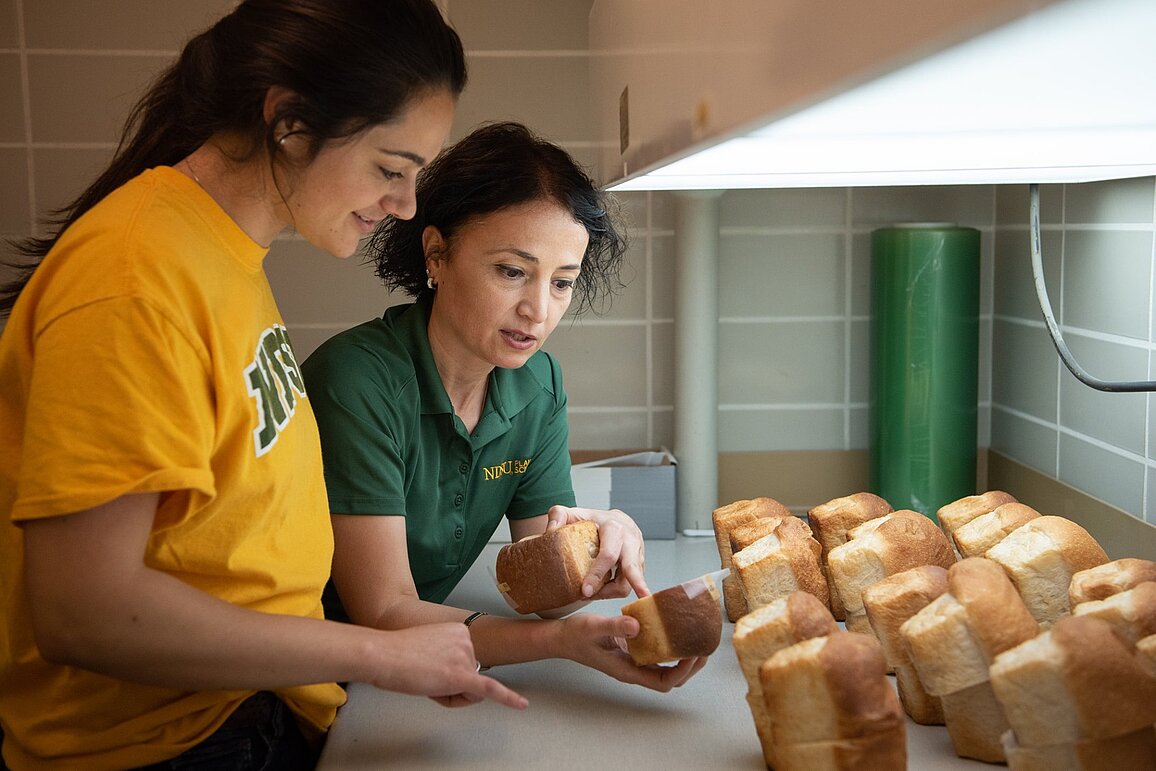NDAES Scientists Study Effects of Vacuum Steam Treatment on Hard Red Spring Wheat

Wheat flour products such as cookie dough, cake batter and frozen dough are intended to be consumed only after a cooking step, yet some consumers eat raw dough despite warnings on food labels. Recent outbreaks related to the consumption of raw flour, primarily caused by Salmonella and E. coli, have raised concerns about the safety of flour products.
“Current wheat milling practices do not use techniques that actively aim to reduce microbial populations,” says Senay Simsek, Bert L. D’Appolonia Cereal Science and Technology of Wheat Endowed Professor in the NDSU Department of Plant Sciences. “The development of a process that can reduce foodborne pathogens while maintaining wheat quality is of great interest to wheat millers and processors.”
Simsek, along with Teresa Bergholz, former associate professor in NDSU’s Microbiological Sciences department, and a group of NDSU graduate students researched and developed a vacuum steam pasteurization process that has proven effective at decreasing E. coli and Salmonella bacteria on low-moisture crops, such as hard red spring wheat.
Steam is the desired medium for pathogen reduction in the food industry because of the high level of heat transfer. Using heat to pasteurize wheat is challenging because high temperatures can affect the functionality of milled flour. Vacuum steam treatment utilizes steam under subatmospheric pressure, which creates lower temperatures.
“The low temperatures attainable with this method do not negatively affect the quality of the wheat but maintain the effective heat transfer attained with steam, allowing for a greater reduction of pathogens,” Bergholz says. “This technology achieved a 1,000- to 10,000-fold reduction in pathogen numbers on grain with a treatment time of less than 10 minutes.”
Their research showed that steam condensing at 65 degrees Celsius can significantly reduce foodborne pathogens on hard red spring wheat without affecting the quality or functionality of milled flour in bread making.
“These findings illustrate how interdisciplinary collaboration combined with innovative research can create real-world solutions,” says John McEvoy, NDSU Microbiological Sciences professor and department head.
Simsek and Bergholz recently were awarded a U.S. Department of Agriculture grant to continue their research.
FOR MORE INFORMATION:
https://www.ndsu.edu/microbiology/news/detail/56614/
Senay Simsek, 701-231-7737, senay.simsek@ndsu.edu


